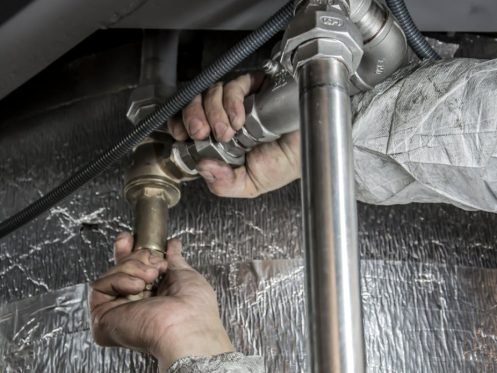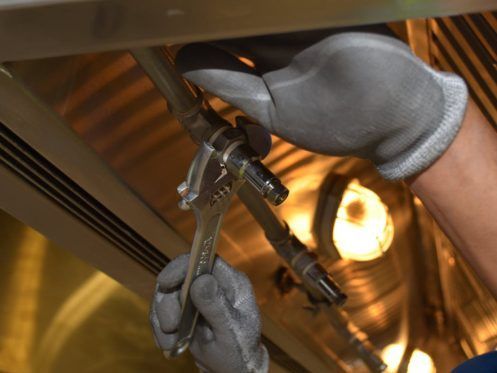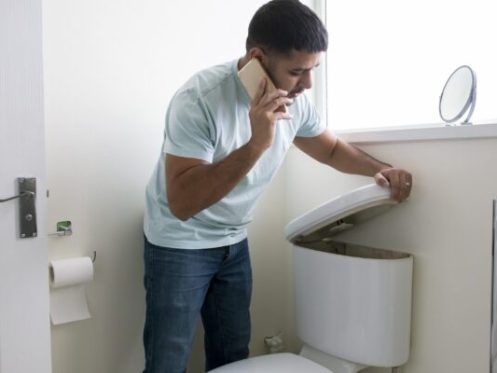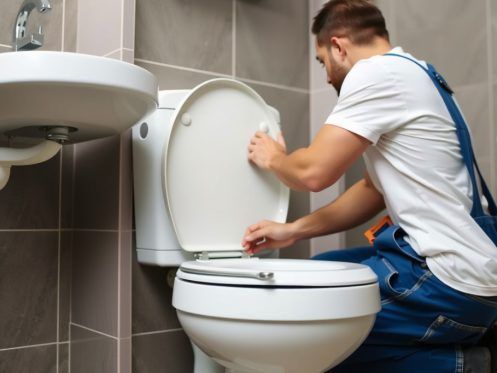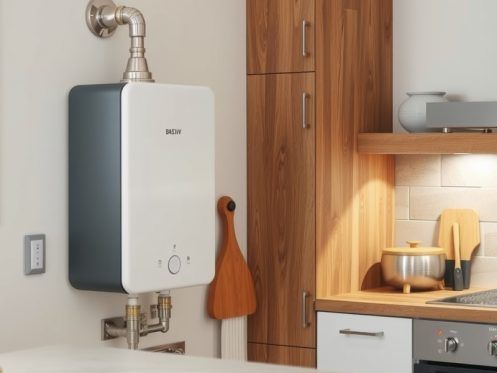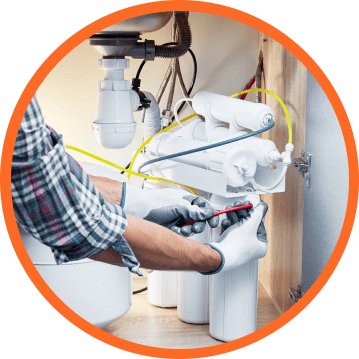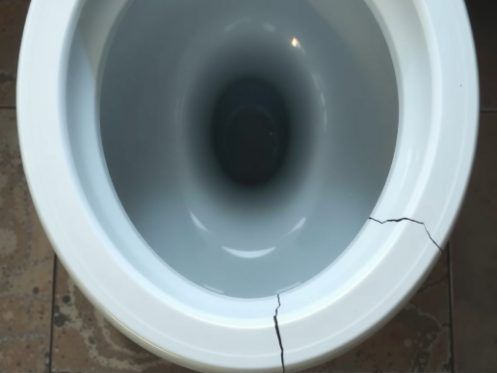
A cracked toilet is one of those plumbing problems that can go from small inconvenience to full-blown mess in no time. Whether it’s a thin fracture creeping across your tank or a more obvious crack in the bowl, it’s not something you want to ignore. Left unaddressed, even a tiny leak can cause water damage to your floors, subfloor, or walls—and drive your water bills through the roof.
At Rare Breed Plumbing, we’ve helped homeowners across Utah tackle everything from hairline cracks to full toilet replacements. Whether you’re a DIYer or wondering when it’s time to call in the pros, here’s what you need to know.
What Can Cause a Toilet Tank or a Toilet Bowl to Crack
Toilets might seem tough, but porcelain can be surprisingly vulnerable to certain stresses and environmental conditions. Cracks can show up suddenly or develop slowly over time, depending on how your toilet is used and maintained.
Common causes of toilet cracks include:
- Overtightening bolts: Fastening tank or seat bolts too tight can create stress fractures in the porcelain.
- Dropping heavy objects: Items like shampoo bottles, tools, or even tank lids can cause cracks if dropped on the toilet.
- Age and wear: As porcelain ages, it becomes more brittle, making older toilets more susceptible to cracking.
- Temperature changes: Sudden shifts in temperature (like pouring hot water into a cold toilet) can cause expansion and cracking.
- Manufacturing defects: Sometimes the flaw was there from the beginning and only reveals itself over time.
- Improper installation: If a toilet isn’t properly secured or balanced, pressure points can lead to cracks.
- High water pressure: Excessive water pressure can stress tank seams and cause structural failure.
No matter the cause, even small cracks can grow over time. That’s why it’s smart to inspect your toilet regularly and address damage early—before it turns into a leak or a full replacement.
If you notice a crack forming, your first step is to figure out how bad it is and whether it’s something that can be repaired or should be replaced altogether.
Dealing With a Hairline Crack in a Toilet Tank
Hairline cracks are usually superficial and appear near the top of the tank or along the sides. If caught early, many of these can be sealed with a simple repair and a little patience.
What to do if you find one:
Hairline cracks in toilet tanks often don’t leak at first, but that doesn’t mean they’re harmless. Once water pressure and temperature come into play, the crack can spread. Here’s how to handle it:
- Turn off the water supply to the toilet and flush to empty the tank.
- Dry the tank completely. You may need to use a towel or even a hair dryer to make sure the crack area is clean and moisture-free.
- Use waterproof epoxy or a plumbing-grade porcelain sealant designed for toilets. Apply the sealant along the crack, following the product instructions.
- Allow time to cure. Most epoxy needs 24 hours to fully set.
- Turn the water back on and fill the tank slowly. Watch closely for signs of seepage or expanding cracks.
- Monitor over the next few days for any changes.
This kind of fix can work well for non-leaking, hairline cracks, especially in the upper portion of the tank. Just remember—it’s a temporary solution. Cracks can reopen or worsen under stress, so keep an eye on it.
If the tank starts leaking again or you notice new cracks, replacement is usually the safest route.
Dealing With Thick Cracks in the Toilet Bowl
Cracks in the toilet bowl are more serious. They’re harder to fix and riskier to ignore—especially if water is already leaking onto the floor.
Here’s how to approach the situation:
If you spot a visible crack in the bowl, your best bet is to turn off the water immediately and stop using the toilet until the situation is evaluated. Here’s how to move forward:
- Shut off the water supply and flush the toilet to remove standing water.
- Inspect the crack. If it extends below the waterline or through the base, replacement is usually required.
- Avoid using sealants inside the bowl. They won’t hold up under water exposure and flushing pressure.
- Check for floor damage. If water has been leaking for a while, you may also be dealing with water-damaged flooring or subflooring.
- Replace the toilet if necessary. Bowl cracks can lead to instability and are considered a sanitary risk if left unsealed.
Unlike tank cracks, bowl cracks are rarely repairable—especially those below the waterline or on the base. The cost of a new toilet is typically less than dealing with water damage or a sudden break later on.
Can a Repaired Toilet Tank or Bowl Last Long?
In some cases, yes—but only if the crack is small, superficial, and located in a low-pressure area like the upper portion of the tank. With proper sealant and curing time, a repaired tank may last for months or even a few years.
However, cracks in the toilet bowl or deeper structural cracks are almost always short-term fixes at best. If you’re trying to stretch a little more life out of the unit, a repair might work for a while—but don’t count on it as a long-term solution.
When in doubt, it’s smarter (and safer) to replace the toilet than risk costly damage or an unexpected failure later.
When to Call a Professional for Dealing with a Leaky or Cracked Toilet?
Cracks in your toilet aren’t something to ignore. If you’re unsure about the severity—or if you’ve already tried a repair and it didn’t hold—it’s time to call in the professionals.
You should also contact a licensed plumber if:
- The crack is leaking water onto the floor
- You’ve noticed signs of water damage around the base of the toilet
- The toilet rocks, shifts, or feels unstable
- You’re dealing with multiple cracks or repeated issues
- You’re planning to upgrade or replace the unit altogether
In most cases, cracked bowls need full replacement, not just repair. A professional plumber can help you choose a new toilet that fits your space, meets efficiency standards, and is installed correctly to avoid future issues.
At Rare Breed Plumbing, our skilled plumbers offer expert service at a fair price, whether you need toilet replacement, leak repair, or full bathroom plumbing support. We’ll inspect the damage, recommend the best course of action, and handle the job cleanly and quickly, so you can get back to your routine without stress.
Call Rare Breed Plumbing Today for Any Toilet Issues in Your Utah Home
A cracked toilet tank or bowl might seem like a small inconvenience, but left alone, it can turn into a big problem fast. Whether you’re dealing with an active leak or just not sure how serious the crack is, Rare Breed Plumbing is here to help.
We offer full-service toilet repairs and replacements across Utah, including Sandy, Bountiful, West Jordan, Kaysville, Bluffdale, Layton, and beyond. Our experienced team will give you honest advice, expert repairs, and a free estimate so you can make the right choice for your home and your budget.
Give us a call today—we’ll handle the hard stuff, so you don’t have to.

